Simulation in Action
A boon to engineering design, multiphysics simulation is a longstanding process that has improved with technology to provide valuable design results.

The building is to serve as offices for OPPO and as a public space for leisure and retail. Zaha Hadid Architects used CFD simulation to test their design. Image courtesy of SimScale.
Latest News
February 4, 2022
Simulation has flourished with new engineering tools that allow engineers to create a virtual reality akin to reality. With complex software and tools that enable 3D prototyping, digital twin creation and applications such as advanced computational fluid dynamics (CFD), all aid the comprehensive design efforts of engineers.
Simulation and virtual design not only allow different functional disciplines on design teams to efficiently collaborate, but they also aid trial and error, better proof of concept and numerous design iterations.
In the past, such iterations were time-consuming and costly to physically create and test, as designs were tested and tried, only to send engineering design teams back to the drawing board.
Simulation’s Long Slow Rise
Though simulation has been around for many years, what’s changed is the ease with which engineers can design virtually. Virtual design may lead to better realities. In the process, product design lifecycles are shortened, costs are reduced and many safer products and systems pose less overall risk than has been the case previously.
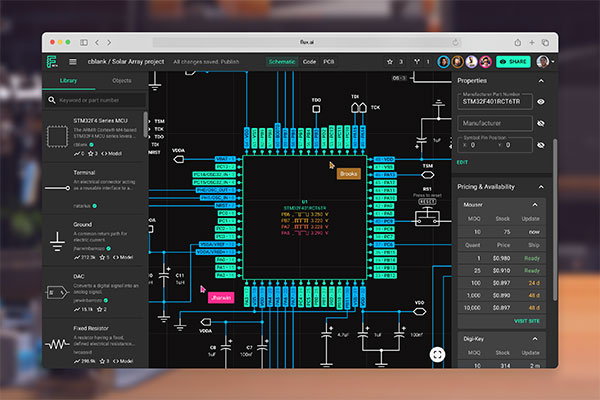
“This process has been happening now for about 60 years,” says Brett Chouinard, chief technology officer at Altair. “The first software products written in our space, physics-based simulation are just a little bit older than me. Since that time, this process has been ongoing—this idea of replacing physical prototypes with simulation. The first thing I want to say is that physical testing is simulation. It’s really a continuum that we’re talking about here where computer-based simulation models are providing value that is a different kind of value.”
Chouinard adds that multiphysics environments make simulation more accurate and also more capable of solving larger, more detailed problems.
“I was talking with a large company, and they made a statement to me that they want to be fully virtual by 2025,” says Chouinard. “ They’re definite. These companies invest heavily in tools and are marching down this path of replacing physical testing with virtual simulation.”
Considering the past and present, and looking forward to the future, it’s worthwhile to explore specific examples of how simulation is used to create real products and engineering that would be much harder to design in the past.
Simufact Welding and Digital Twins
Hexagon’s Simufact Welding is its next-generation welding process simulation solution that enacts a digital twin of the fabrication process. Physics-based simulation dramatically reduces tryouts and prototypes, which empowers engineers to determine appropriate strategies that minimize distortions, predict residual stresses and perform virtual pull tests to the digital twin of the welding process.
The simulation process is an evaluation of local material properties and potential weld defects, according to Dan Marinac, executive director of product marketing for Hexagon. Whereas prediction of microstructure, hardness, cracking and liquid metal embrittlement would typically take expensive physical testing and significant amounts of time to evaluate and mitigate, simulation enables this process in a relatively short duration without physical test. It enables engineers to test various process parameters, sequences and material combinations with a low risk factor.
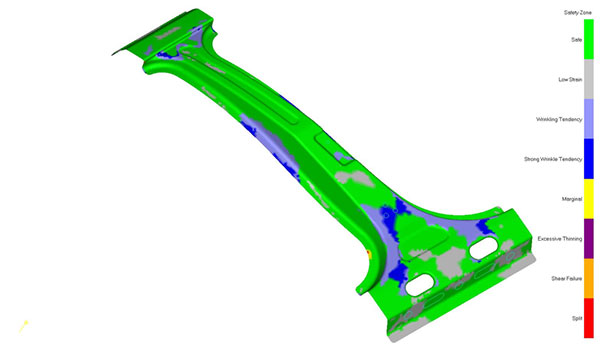
The prediction of residual stresses may contribute to fatigue life.
“We have established workflows to chain the results from Simufact Welding directly into structural and fatigue analysis so that the welding residual stress and strain can be considered during the structural analysis. This chained analysis enables engineers to consider the effects of the manufacturing process when the assembly is put into service, predicting the location and risk of fatigue cracking and other related issues that can cause significant quality and safety issues when they occur in the field,” Marinac says.
He adds that the third use case is to perform the “virtual pull test.” In this workflow, one weld is simulated on a simple coupon geometry (one small swath). Then the specimen is virtually pulled apart to evaluate the force and energy required to break the joint. This information is then fed into CAE structural, noise, vibration and harshness (NVH) and crash models.
The ability to characterize the joint strength of various welds virtually without physical test can translate to hundreds of thousands or even millions of dollars of savings annually. A typical auto company may conduct 10,000 or more pull tests in one year. At the cost of between $100 and $500 per test, the costs add up quickly. This unveils the attractive economics of Simufact.
Architectural Simulation and Testing
The trend of architects using simulation for compliance is proving valuable and replacing things such as wind tunnel testing altogether, according to David Heiny, CEO and co-founder of SimScale.
Specifically, simulation has removed the burden of expensive wind tunnel testing in the early design stages. Instead of testing five different building designs, architects and engineers can converge on the best design and test just one.
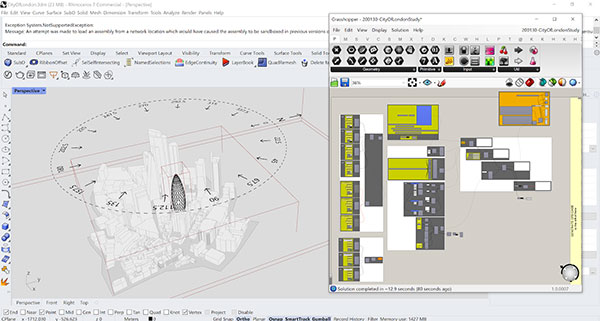
Examples of using wind tunnel testing only for compliance, rather than design and performance, were explored in detail for projects led by architects Thornton Tomasetti, PRP Architects and Zaha Hadid.
Heiny says to consider the evolution of daylight testing in architecture. In architecture, you have lighting and daylighting, and must show that the designs will get enough daylight in a given space throughout the year or throughout different seasons. The amount of light required by regulation varies according to business type.
In the past, to do daylight studies, designers had to use a skybox to act as a “daylight” version of wind tunnel testing. They were big, heavy, expensive boxes. Along comes daylight simulation (radiosity method but slow), then ray tracing (a very fast way to do daylight simulation).
Simulation is so advanced now; architects can simulate daylight every hour of the year for every season. Skyboxes have almost all disappeared—it’s obsolete. Daylight simulation is now more commonplace and affordable.
In 10 to 15 years, wind tunnel testing could very well be gone with the wind. Such testing can be costly and cumbersome. Municipalities have started accepting CFD results in place of wind tunnel testing.
Delfast Electric Bike
Delfast is an electric bicycle maker. During development, the company’s engineers kept running into challenges that couldn’t be solved in real-world field tests. In one model, the suspension kept breaking where trial and error with physical products was too costly and time-consuming.
Delfast used simulation to adjust the loading and configuration of the suspension and explore different possible solutions. After transitioning to Autodesk Fusion 360 and using its cloud-powered simulation capabilities, Delfast’s production cycle decreased by several months, saving countless hours and dollars.
Physical prototyping has enormous limitations and is rarely successful in providing timely feedback that can be used to influence dramatic change in a design, according to Stephen Hooper, vice president and general manager of Autodesk Fusion 360 in San Francisco. He adds that users shouldn’t leverage simulation as a substitute for current design processes that work perfectly—it’s a great complement but not a silver bullet.
“By incorporating simulation as a complement to existing processes and toolsets, companies can engineer better products, which embody additional value and capabilities,” Hooper says. He emphasizes that Autodesk strives to democratize access to powerful simulation tools.”
Optimo Medical Eye Surgery
Optimo Medical AG and Ansys are collaborating to combine high-fidelity structural simulations with digital twin technology to efficiently develop patient-specific astigmatism surgery plans and significantly enhance patient vision.
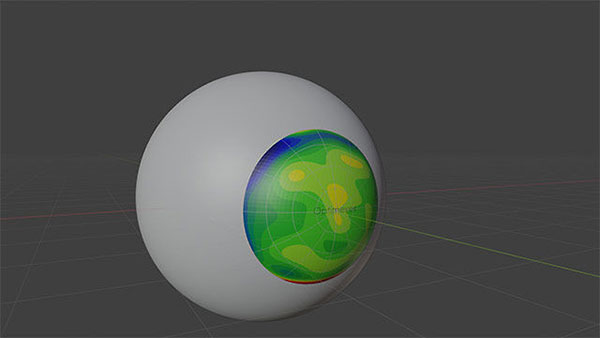
Astigmatism is a common vision condition due to improper curvature of the cornea, the lens or the retina resulting in blurred vision. Ophthalmologists perform laser eye surgery to correct that curvature by making incisions to relax the eye’s shape.
The change in shape depends upon the specific patient’s eye. Ansys Mechanical can model the eye tissue, the various fluids in the eye and the patient-specific eye shape. But mostly, experienced mechanical engineers apply Ansys Mechanical to engineering problems, not ophthalmology issues.
Optimo Medical and Ansys worked to develop an automated solution that uses information from instruments in the doctor’s office to automatically generate 3D models of the patient’s eye. Then the surgeon uses an app called OptimEyes to perform virtual eye surgeries that enhance individual patients’ incision parameters.
Ansys Mechanical is called in the background to produce that virtual surgery result. It equips surgeons with a planning tool for addressing low-cylinder astigmatisms during cataract surgeries and predicting operation outcomes.
Summarily, it’s important to include all important aspects of a system in a simulation.
“Think of the rest of the system as the boundary conditions of the problem,” says Larry Williams, distinguished engineer with Ansys. “That unique solution I mentioned above depends upon the underlying physics equations and the boundary conditions of the problem. It’s important to consider the device or subsystem you are modeling as part of a larger system that places inputs, outputs and other constraints on the problem.”
More Altair Coverage
More Ansys Coverage
More Autodesk Coverage
More Hexagon Coverage

More SimScale Coverage
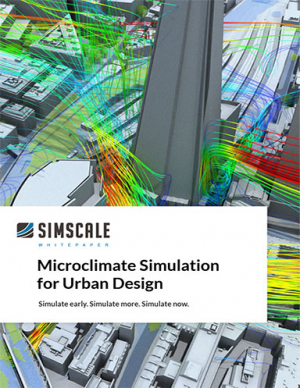
Subscribe to our FREE magazine, FREE email newsletters or both!
Latest News
About the Author
Jim Romeo is a freelance writer based in Chesapeake, VA. Send e-mail about this article to DE-Editors@digitaleng.news.
Follow DE








